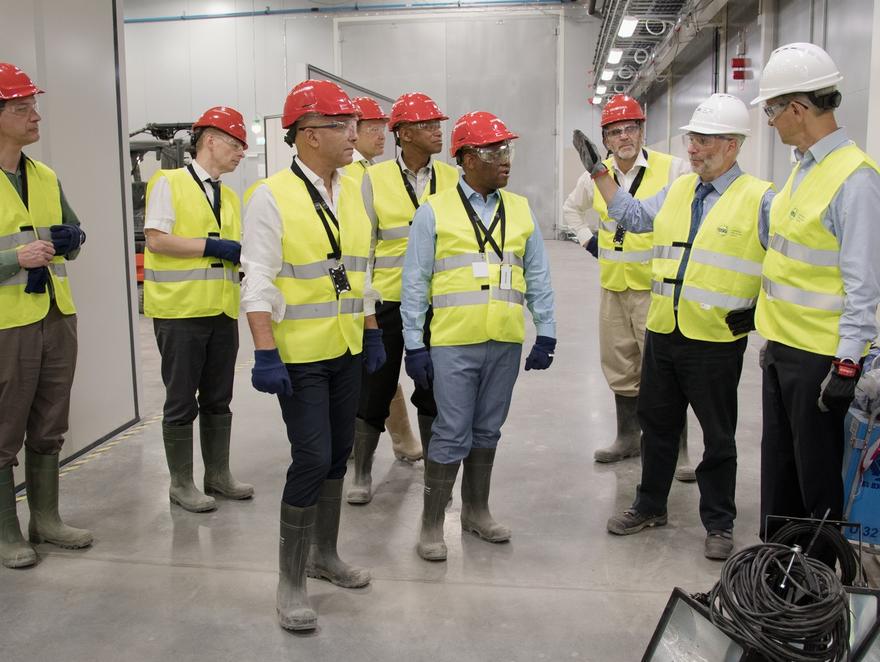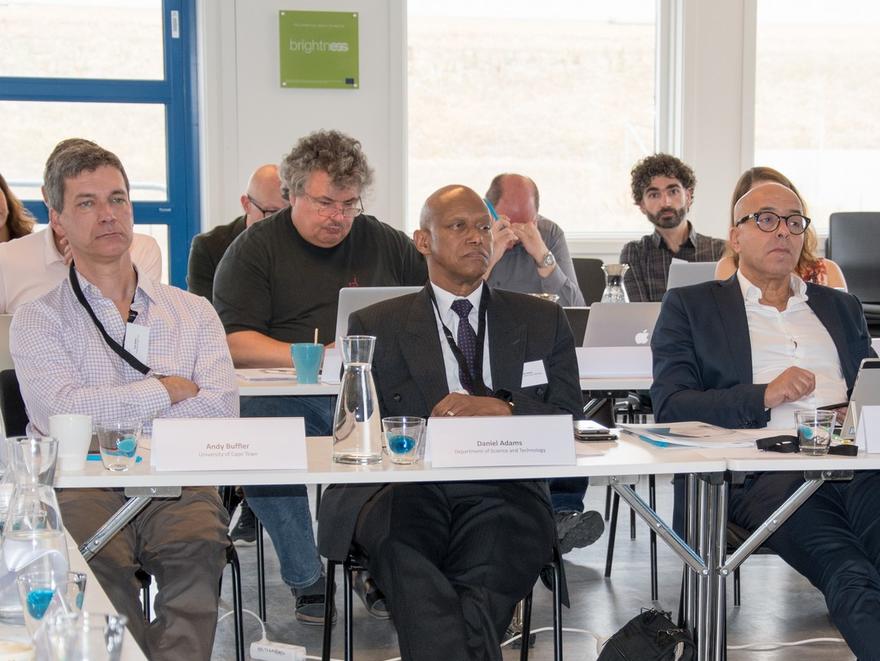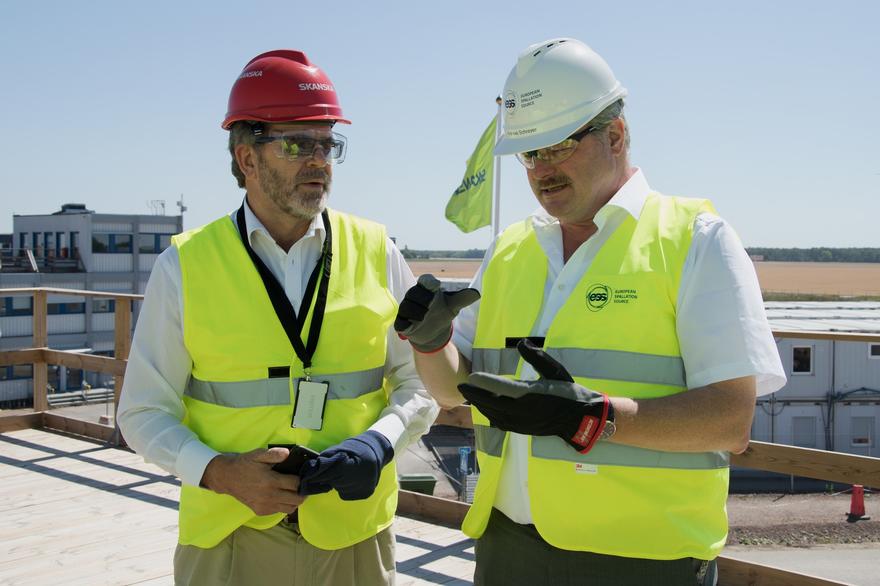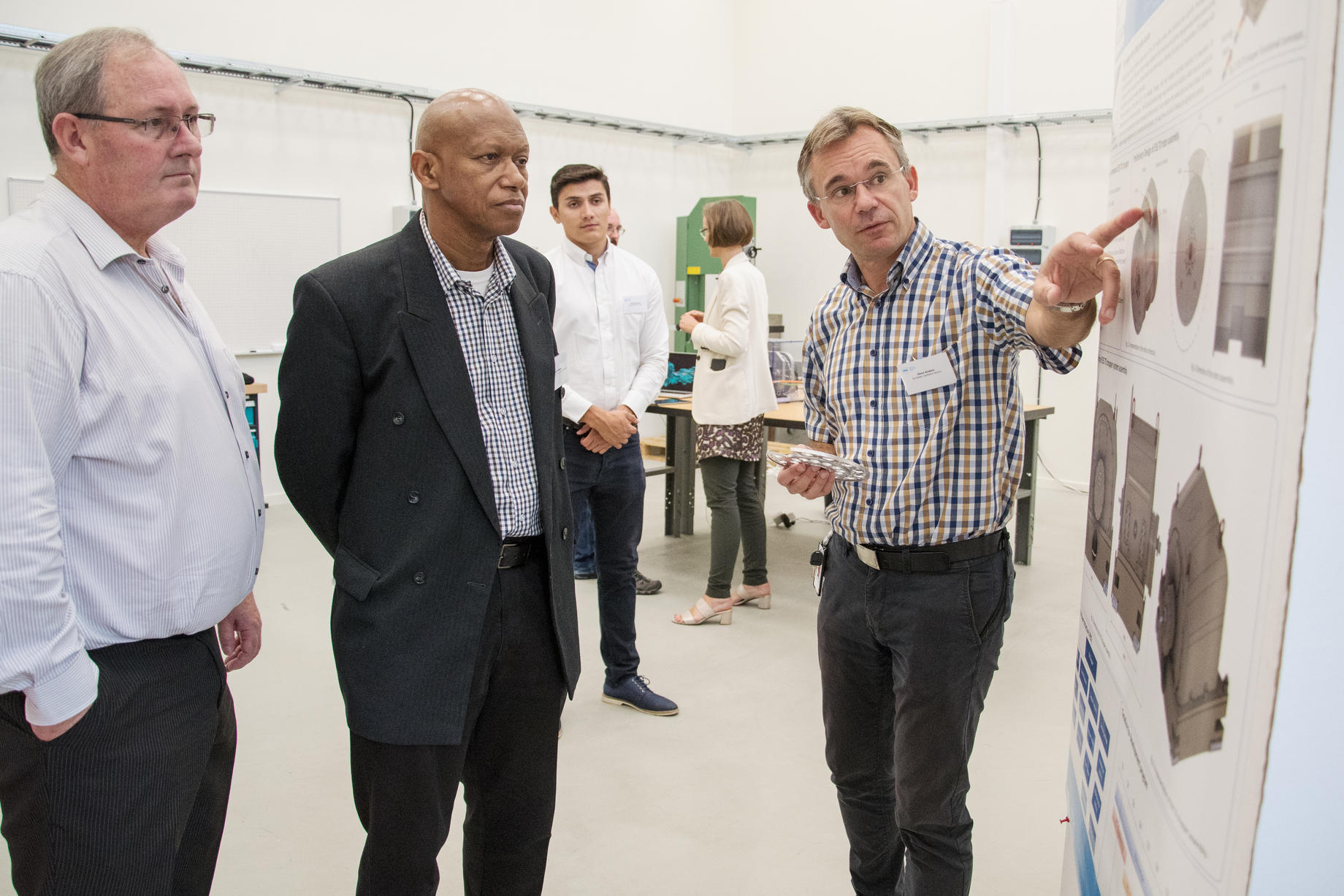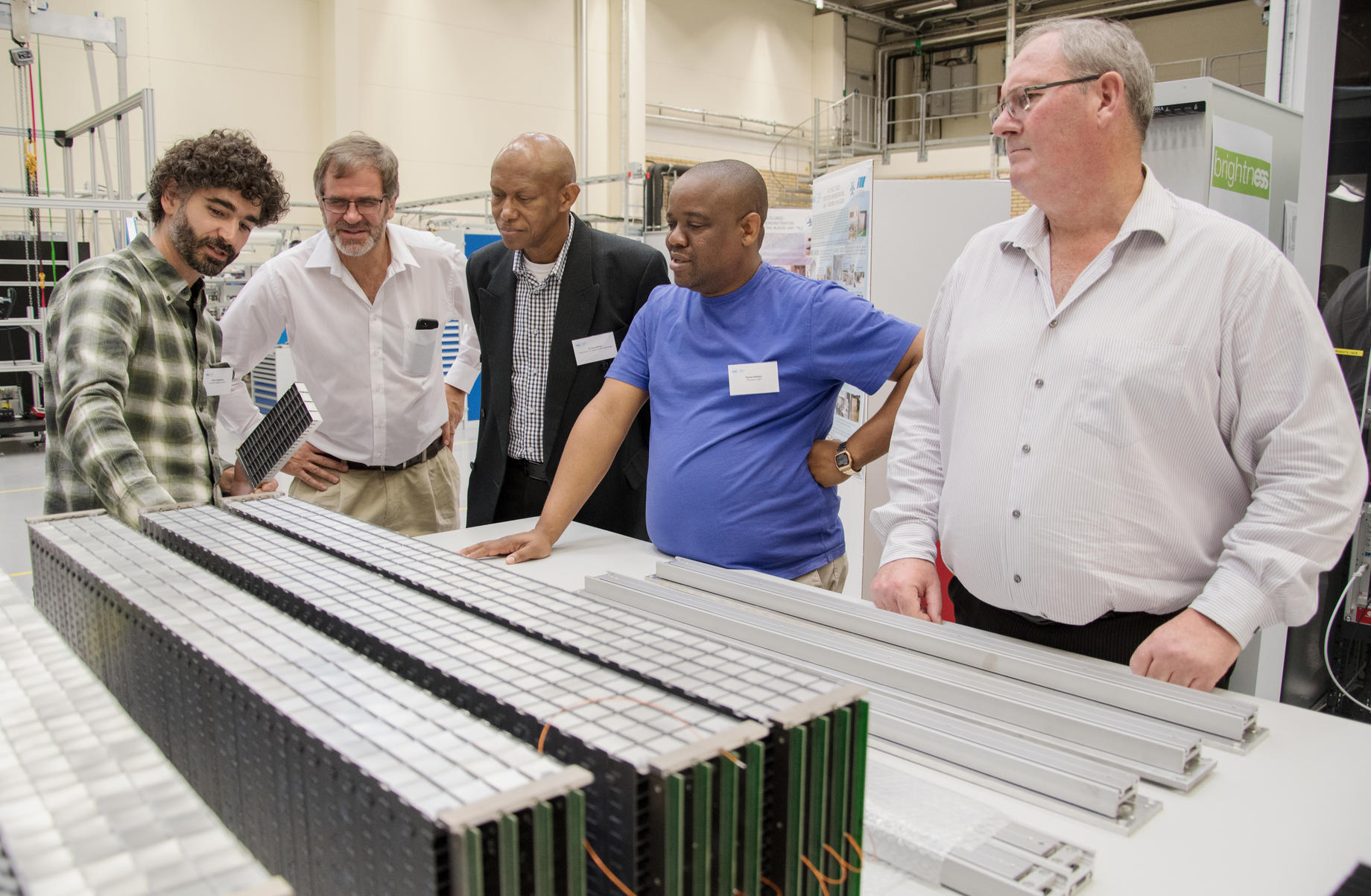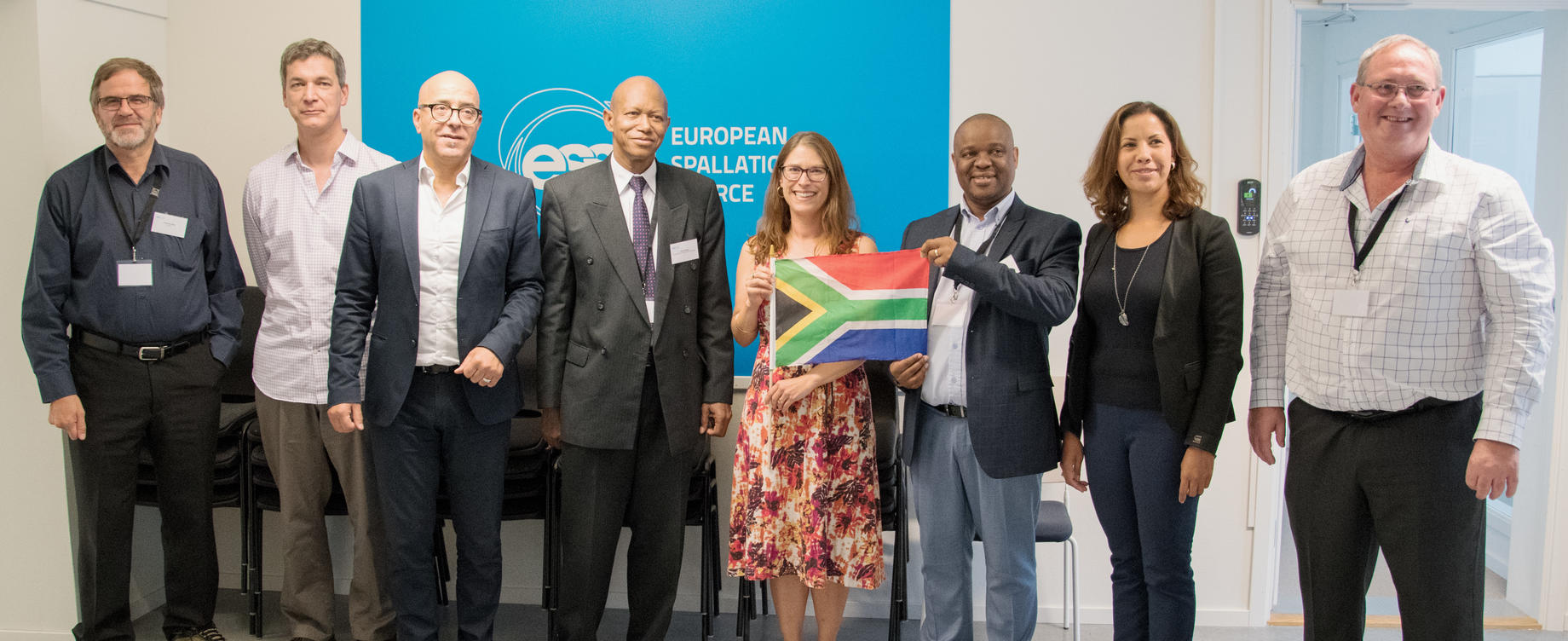
This week’s visit by a group of South African scientists and decision-makers highlights the continued anchoring of ESS as a global research infrastructure.
LUND—A high-level scientific delegation from the Republic of South Africa spent three days at ESS this week. More than two dozen members of ESS staff, management and governance participated in the meetings, which covered a broad range of scientific, technical and organisational activities both at ESS and at South Africa’s research infrastructures. The exchange explored areas of mutual interest, including materials science, technology development and Big Data.
The visiting delegation was led by the South African government’s Department of Science and Technology (DST), and included scientists from the National Research Foundation’s iThemba Laboratory for Accelerator-Based Sciences (LABS), the South African Nuclear Energy Corporation (NECSA), and the University of Cape Town, representing the nation’s university sector.
Apart from a full day of detailed scientific exchanges on Thursday, the agenda included presentations on the role of science, technology and higher education in South Africa’s national development, the ESS membership structure, its in-kind model and procurement processes, and the ESS national strategies of Host Countries Sweden and Denmark.
Cultivating the Shared Vision of a Grand Potential
“Developments in science, technology and innovation are fundamentally altering the way people live, connect, communicate and transact, with profound effects on economic growth and development,” said Daniel Adams, South Africa’s Chief Director for Basic Sciences and Infrastructure, who led the delegation to ESS on behalf of DST. “Access to global research infrastructures has always been an essential part of our national scientific landscape, and collaboration with ESS presents an excellent opportunity to contribute to South Africa's strategic approach to national development.”
South Africa has maintained a very successful cooperation agreement with CERN for more than a quarter century, and is also one of two host sites for the 11-nation Square Kilometre Array (SKA) project scheduled to begin construction next year. Engagement between ESS and South Africa has progressed steadily since 2015, when ESS began working through the European Commission’s Group of Senior Officials (GSO) on Global Research Infrastructures to guide its expansion beyond Europe.
Director for Science Andreas Schreyer visited South Africa last summer, and earlier this year, in preparation for this week’s visit, DST conducted their own workshop for South African researchers interested in ESS.
“We share the vision that global research infrastructures are key to solving society’s grand challenges, through scientific discovery, skills and education, and the economic development that follows. This visit has shown that there is a strong case for South Africa’s participation in ESS,” said ESS Director General John Womersley. “The continuing internationalisation of ESS is an important part of delivering that shared vision.”
Building a Science, Technology and Innovation Partnership
The meeting, which was funded by the EU’s BrightnESS project, closed with a structured discussion on the way forward for South African participation in ESS. The discussion covered cooperation opportunities, including the exchange of researchers, students and technology, and the potential for in-kind contributions and participation in the scientific user program.
Like Adams before him, Faïçal Azaiez, Director of iThemba LABS, highlighted the crucial link between the internationalisation of South Africa’s research infrastructures to that of its national development. Azaiez outlined ambitious plans for iThemba—which stands as Africa’s central node in the constellation of global research infrastructures and the largest accelerator facility in the southern hemisphere—to become “the African CERN”.
“The NRF [South Africa’s National Research Foundation] and iThemba LABS,” said Azaiez, “are looking forward to advancing, in a step-by-step scheme, a partnership with ESS in the domains of neutron-based research and instrumentation, and technology development.”
South Africa’s Long Tradition of Using Neutrons to Solve Problems
Days two and three of the visit were squarely focused on the cutting edge research and development in-progress at ESS and the South African facilities.
The South African research community has a particularly strong tradition in the use of neutrons for geoscience, energy applications, archaeology and palaeontology, nuclear medicine and engineering materials. In addition to the accelerator-based facilities at iThemba, it is home to NECSA’s SAFARI-1 research reactor, a facility commissioned in 1965 that is expected to continue operations through 2030. Like other research reactors around the globe, its capabilities are needed to complement research done at spallation sources like ESS.
“ESS would surely benefit if the considerable experience South Africa has in the construction and long-term operation of neutron instruments should result in the development of a new instrument for ESS,” said ESS Director for Science Andreas Schreyer. “Their successes in strain scanning, radiography and tomography could also contribute to the development of the ESS instruments ODIN and BEER.”
Instrument R&D and Big Data
The two days of discussion were rounded out with a walking tour of the ESS construction site and a half-day visit to the ESS Utgård Workshop and Laboratory in Lund. Demonstrations of instrument technologies under development, including boron-based detectors, choppers and new sample environment equipment were conducted by ESS scientists.
The group was also briefed on developments at the ESS Data Management & Software Centre. How to manage extremely large volumes of data, and to make it useful and available to researchers, is of considerable interest to the hosts of the Square Kilometre Array, which stands as arguably the most challenging data management project in history.
“ESS is impressive,” said Andrew Venter, a diffraction research scientist at NECSA. “Being on the ground in Lund, seeing the advanced state of the construction, the R&D for instruments, and meeting with the people who are building ESS has been stimulating. The project should give new energy to anyone working in neutron science.”

























